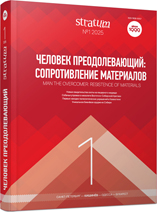Критерии определения палеолитических составных орудий: археологические и экспериментальные данные
Identification of Hafting Traces on Palaeolithic Stone Tools: Archaeological and Experimental Evidence
Author(s): Yaroslav D. Ivanov, Vasilisa S. Smolkina, Kseniya N. StepanovaSubject(s): History, Archaeology, Prehistory
Published by: Издательский дом Stratum, Университет «Высшая антропологическая школа»
Keywords: Middle Palaeolithic; Upper Palaeolithic; stone tools; composite tools; hafting; experimental archeology; traceology; micro-wear traces;
Summary/Abstract: The main objective of this paper is to refine the morphological and traceological criteria for identifying hafting traces on the Palaeolithic stone artifacts. After reviewing relevant publications, the authors proceed to the description of their own experiments aimed at the identification of different kinds of macro- and microwear tracers that formed as a result of hafting. The characteristics of these traces depended on the haft material, duration of use, way of attachment, and the involvement of abrasive materials (such as ochre or soil). Some of the obtained results defy conventional wisdom. For example, the shiny spots known as “G-type polish” and often thought to be signs of handle use, are not always reliable. Likewise, contrary to a widely accepted view, such factors as the tool morphology and the craftsman’s strength have little effect on the traces of hafting. The results of this study show that many factors can randomly influence the wear, and to better understand this process the role of each factor has to be studied in more detail.
Journal: Stratum plus. Археология и культурная антропология
- Issue Year: 2025
- Issue No: 1
- Page Range: 251-283
- Page Count: 33
- Language: Russian
- Content File-PDF

